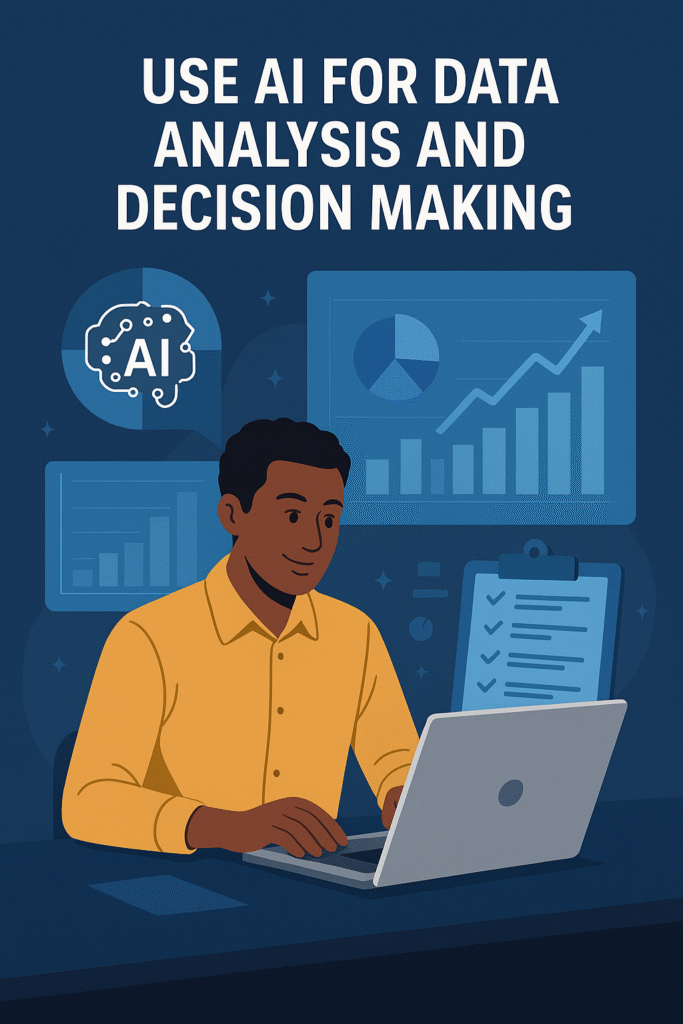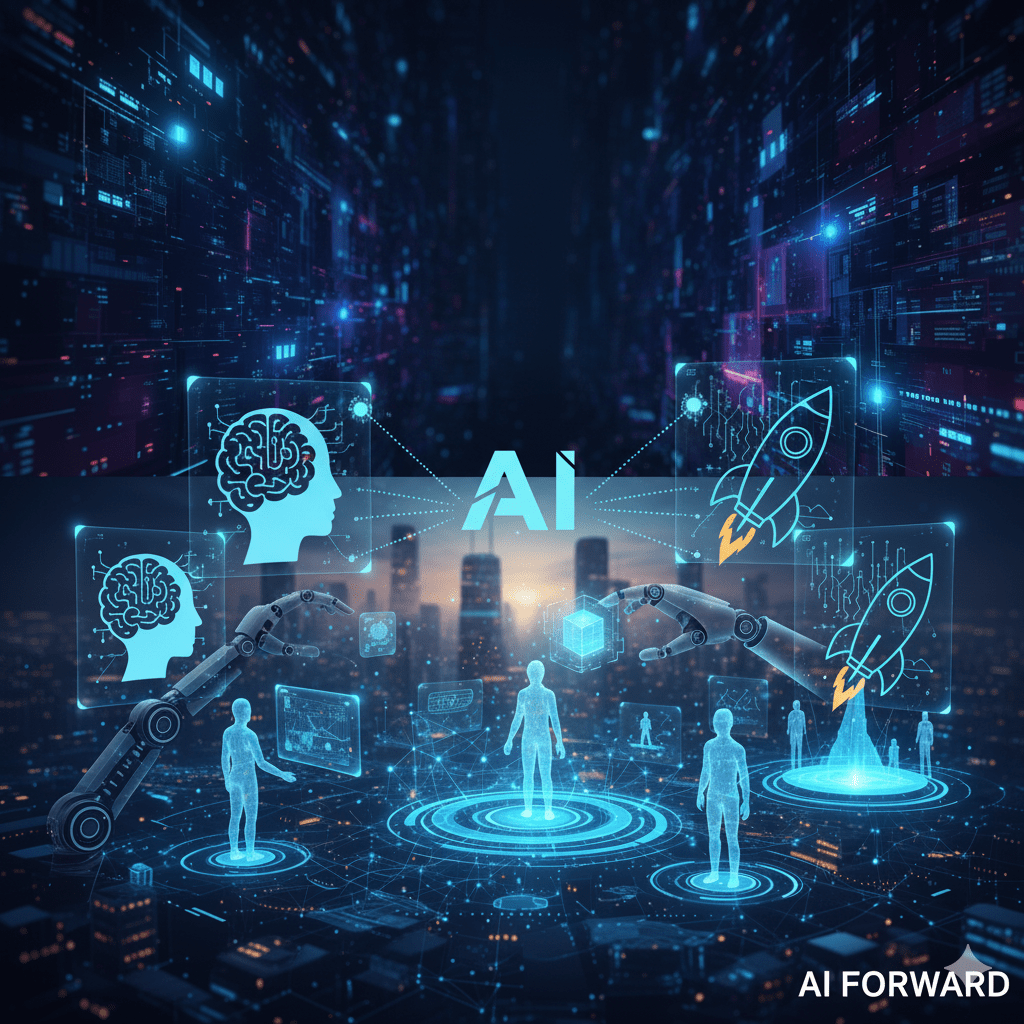Introduction: The Age of AI Leverage
Artificial Intelligence isn’t a distant idea anymore — it’s a living, breathing part of how the world now works. From voice assistants and chatbots to image generators and data-driven insights, AI is silently transforming how people create, communicate, and build businesses. But while most people simply use AI tools, the real winners are those who leverage them — strategically turning AI into a competitive edge.
In this post, you’ll learn exactly how to leverage the AI space to create value — whether you’re an entrepreneur, content creator, or professional trying to future-proof your career.
Let’s dive in.
1. Use AI for Ideation and Creative Brainstorming
One of the most immediate ways to leverage AI is by using it as a creative thinking partner. Instead of staring at a blank page, you can use tools like ChatGPT, Gemini, or Claude to generate ideas on demand.

For example:
- Bloggers: Ask AI to “generate 10 blog post ideas about the future of farming in Zambia.”
- Entrepreneurs: Ask, “What are 5 startup ideas using AI in logistics?”
- Designers: Request mood boards, brand palettes, or campaign concepts using AI image tools.
The beauty of AI-driven ideation is that it combines speed with diversity. AI can scan millions of data points in seconds and present ideas that would take a human hours to think up.
👉 Pro tip: Refine your prompts. Instead of “give me ideas,” say “give me 10 unique, actionable business ideas in the education sector that use AI and require low startup capital.”
AI responds best to clarity and context — treat it like a partner that needs direction, not a magic button.
2. Automate Repetitive Tasks and Save Time
Automation is the foundation of AI’s power. Imagine eliminating hours of repetitive work — scheduling, data entry, email drafting, reporting — with a few clicks. That’s not science fiction; it’s everyday business reality.
Examples:
- Use Zapier or Make (Integromat) to connect apps and trigger actions automatically.
- Deploy AI email assistants to draft, summarize, or respond to messages.
- Use ChatGPT with APIs to summarize meetings, generate invoices, or track leads.
- Let AI transcription tools like Otter.ai or Whisper convert calls into text instantly.
According to a 2025 McKinsey report, companies using automation through AI see productivity jumps of 20–40% in key operations. That means you can focus on strategy, growth, and relationships — while machines handle the grunt work.
3. Supercharge Content Creation and SEO
Content remains king — but AI is the new crown maker.
Tools like ChatGPT, Jasper, and Writesonic can generate:
- Blog outlines and first drafts
- Social media captions
- Meta descriptions and keywords
- Video scripts and ad copy
You can use AI to write faster, but the real trick is to edit smarter. AI helps with structure and SEO optimization, while your human touch keeps the content authentic.
Here’s how to make AI content Google-friendly:
- Use long-tail keywords like “how to leverage the AI space” naturally in subheadings.
- Structure your post using H2 and H3 tags for each strategy.
- Include FAQs that match Google’s “People Also Ask” section.
- Always humanize — edit, fact-check, and inject your personality.
Example prompt:
“Write a 1,000-word blog post explaining 5 ways small businesses in Africa can use AI to grow, including real examples and SEO-optimized subheadings.”
You’ll get a solid first draft that you can refine and publish.
4. Use AI for Data Analysis and Decision Making
Data drives everything — from marketing to hiring to budgeting. But not everyone is a data scientist. That’s where AI changes the game.

Instead of manually crunching numbers, you can ask AI to analyze data and surface insights in plain English. Tools like ChatGPT with data analysis, Google Gemini Advanced, and Tableau GPT let you upload CSVs or connect dashboards to extract trends and patterns.
Examples:
- “Which of our blog topics brought the highest traffic last quarter?”
- “Which ad campaign had the best return on investment?”
- “Predict our monthly revenue based on last year’s data.”
AI acts like an on-demand analyst — turning spreadsheets into strategic insights.
In business, this is gold. It allows faster decisions, data-backed marketing, and early detection of problems before they become costly.
5. Personalize Customer Experience with AI
In 2025, personalization is everything. Consumers expect experiences that feel tailor-made — and AI makes that possible at scale.
Here’s how:
- Use AI chatbots (like ChatGPT API or ManyChat) to provide 24/7 support that understands customer intent.
- Train your AI on your product catalog or FAQs so it can answer specific questions instantly.
- Implement AI-driven recommendation systems (like Amazon or Netflix use) to suggest products or content your users are likely to love.
- Send AI-personalized emails that adapt tone, timing, and offers to individual preferences.
Companies that implement personalization effectively see up to 200% higher engagement and 20% more conversions.
The secret? Data. The more your AI learns from user interactions, the smarter your personalization becomes.
6. Build AI-Powered Tools and Products
If you’re entrepreneurial, you can go beyond using AI — you can build with it.
You don’t need to be a programmer anymore. Low-code platforms and APIs have made AI development accessible to almost anyone.
You can build:
- AI chatbots for local businesses
- AI resume analyzers for HR
- AI translators for local languages
- AI pricing or budgeting tools
- Niche AI models for agriculture, finance, or education
Example: An app that uses image recognition to detect plant diseases or analyze soil conditions for farmers in Zambia. It’s both practical and scalable — and that’s the power of AI leverage.
Platforms to start with:
- OpenAI API – for natural language tasks
- Hugging Face – for open-source AI models
- Replit or Bubble – for low-code web apps
- AWS and Google Cloud AI – for scalable hosting
7. Innovate in Emerging Niches
One of the smartest ways to leverage the AI space is by looking where others aren’t.
AI isn’t just for Silicon Valley. It’s reshaping industries everywhere — health, agriculture, logistics, finance, entertainment, education, and even local governance.
If you live in a developing market, this is your moment. There’s massive opportunity in applying AI to local problems that global tech giants overlook.
Examples:
- AI models that translate between local dialects.
- AI systems that predict crop yields or rainfall.
- AI tutors that personalize learning for students in remote areas.
- AI micro-finance scoring tools for rural communities.
AI rewards creativity — not just coding. The question is not “How big is the AI space?” but “Where can I apply it next?”
Bonus: Build a Personal AI Workflow
To truly leverage the AI space, integrate it into your daily routine.
Here’s a sample AI productivity stack:
- ChatGPT / Claude – for writing, summarizing, brainstorming
- Notion AI – for notes, task management, and auto summaries
- Canva Magic Studio – for design and image generation
- Perplexity.ai – for fast, cited research
- Whisper / Otter.ai – for audio transcription
Combine these tools into workflows. For instance:
- Use ChatGPT to brainstorm blog topics.
- Use Perplexity to fact-check data.
- Use Canva to design visuals.
- Use Notion AI to organize drafts.
This combination multiplies your output without increasing your workload.
Common Mistakes When Leveraging AI
Even with all this potential, many people fail to get results because of a few common traps:
- Relying too heavily on AI.
AI can assist, but it shouldn’t replace your original thinking. - Ignoring data quality.
AI is only as good as the data you feed it. Garbage in, garbage out. - Being vague with prompts.
Clear prompts = better output. Always provide context, tone, and target audience. - Neglecting the human touch.
Emotion, empathy, and personal experience still outperform automation in storytelling and trust-building. - Failing to adapt.
The AI landscape evolves weekly. Stay updated with new tools, research, and regulations.
How to Start Today (Your AI Leverage Roadmap)
- Choose a focus area: Content creation, operations, customer service, or data.
- Experiment for one week: Pick 2–3 AI tools and use them daily.
- Measure outcomes: Track hours saved, ideas generated, or revenue boosted.
- Document everything: Turn your learning into content — blog posts, tutorials, or case studies.
- Scale what works: Build systems or services around the best results.
This iterative approach turns AI from a curiosity into a habit — and habits are where real growth begins.
Frequently Asked Questions
1. What does it mean to leverage AI?
It means using AI tools, models, or systems to amplify your capabilities — saving time, improving accuracy, or scaling output beyond what’s possible manually.
2. Do I need technical skills to use AI?
Not at all. Most modern AI tools are no-code or low-code. You just need curiosity and a willingness to learn.
3. Can AI replace human jobs?
AI replaces tasks, not humans. People who learn to use AI will replace those who ignore it.
4. How do I stay updated in the AI space?
Follow AI newsletters (e.g., The Rundown, Ben’s Bites), track updates from OpenAI, Google DeepMind, Anthropic, and experiment weekly.
Conclusion: The Real Power Is in How You Use It
AI is not magic. It’s a tool — and like any tool, its value depends on who wields it.
The people who will thrive in this new era aren’t necessarily engineers or data scientists. They’re adapters — people who see opportunity in every AI feature and integrate it into what they already do best.
Whether you’re building a business, running a blog, or planning your career, learning how to leverage the AI space is no longer optional — it’s the foundation of relevance in 2025 and beyond.
